For the Information Packet regarding our December 2015 “Jubilee Year of Mercy” Pilgrimage with optional “add on” retreat to Norcia, read below, or click here.
Please call 202-536-4555 or email [email protected] to have us hold a place for you. We expect a quick sellout!
Inside the Vatican Magazine “Year of Mercy” Pilgrimage
December 4-10, 2015
Rome and Vatican City
Pilgrimage Overview
Rome

Hotel Michelangelo
Cost
Additional Information
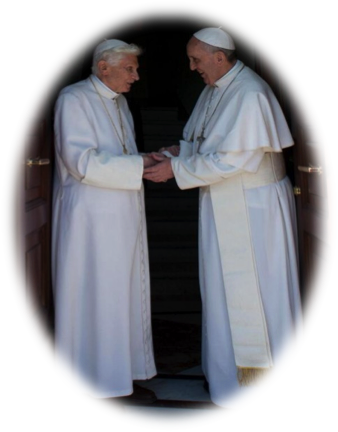
Norcia Retreat Overview: December 10 – 14, 2015 (optional)
Norcia
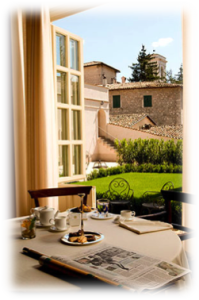
Palazzo Seneca’s Breakfast Room
Cost and Additional Information
Daily Schedule Overview
Friday, December 4, 2015 — Leave from the US.
You will have packed lightly, but taken all you need for this unique pilgrimage. Safe flight!
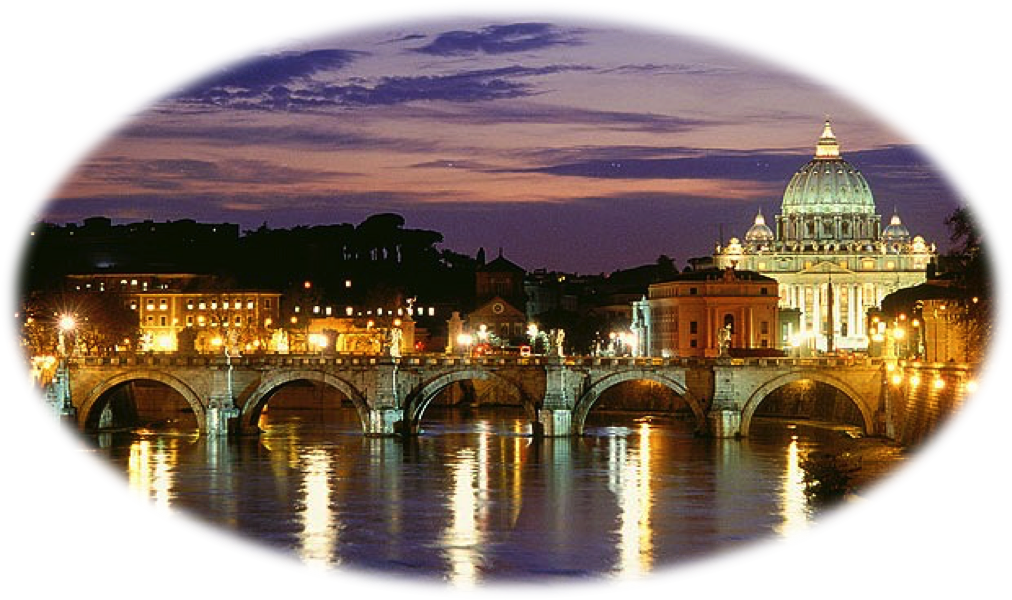
Rome and Vatican City
With a population of 2.7 million, Rome is one of the most populated cities in Europe, and one of the oldest. As we stroll over the time-worn cobblestones, the many layers of Roman history will begin to unfold. From the sculpture and architecture of the Ancients to the vestiges left from the early Church, through the Medieval and Renaissance periods with the masterpieces of artists such as Michelangelo, Raphael, and Bernini, Rome is truly a treasure-trove of art, culture and history.
Contained in the heart of the city of Rome is the sovereign city-state Vatican City, whose territory consists of a walled enclave within the city of Rome. The Vatican has an area of approximately 110 acres, a population of around 840, and is the smallest country in the world.
This is a unique time in the Vatican as Pope Francis continues to define his pontificate, and Emeritus Pope Benedict continues to reside in Vatican City in a small convent inside the Vatican gardens, not far from the Domus Santa Marta, the residence of Pope Francis. The Vatican will be alive with pilgrims from around the world who have come to witness the beginning of the Jubilee Year of Mercy. It is a privileged time to be part of the living Body of Christ – the living stones of the Church, during these days of the “two Popes,” Benedict and Francis, both so very different and yet each so filled with the love of Christ and of His Church.
Saturday, December 5 — Welcome to Italy!
You arrive at Fiumicino airport, about 10 miles outside of Rome to the west, near the Mediterranean Sea. You may have seen the sea as your plane circled to land. You will be met by your driver at the gate as you come out with your luggage after going through customs — you will walk right through the “nothing to declare” line. Your driver will escort you to the Hotel Michelangelo, where Deborah and Robert will greet you upon your arrival. The Hotel Michelangelo will be our Roman home for the next five nights and is located steps away from St. Peter’s Basilica. Once we settle in, there may be time to rest before we head to lunch at one of our favorite restaurants near the Vatican.
After lunch, we will visit the Basilica of Santo Spirito –– the sanctuary of Divine Mercy in Rome established by St. John Paul II on January 1, 1994. Since the beatification of Sister Faustina in 1993, the church has been served by the sisters from the Congregation of Our Lady of Mercy, St. Faustina’s order. There we will participate in the Divine Mercy Chaplet, before attending a private Mass. Confessions will also be made available in preparation for this pilgrimage.
On our way to dinner, Dr. Moynihan will lead us on a “familiarization” walk into Vatican City, paying special attention to St. Peter’s Square, in front of St. Peter’s Basilica, which was built above the tomb of St. Peter, the first Pope and the apostle to whom Christ entrusted “the keys of the kingdom.” Our Welcome Dinner will be at one of our favorite restaurants near the Vatican. Our first day will end early so we can all be rested for the journey to come…

We will visit this image of Divine Mercy in the Basilica of Santo Spirito
Sunday, December 6 — Rome.
We will have a simple, delicious breakfast at the Hotel Michelangelo before departing for Sunday Mass. The Hotel Michelangelo is known for having one of the best breakfast buffets in Rome! (There will be time to observe the 1-hour fast). You will have the option of attending the English Mass at the Basilica of Santo Spirito, or a Latin Mass at the Altar of the Chair in St. Peter’s Basilica. After Mass, which will end just before noon, we will gather in St. Peter’s square to hear Pope Francis’ Angelus message and to pray the Angelus together, along with many pilgrims from around the world. After lunch near the Vatican, there will be free time to shop, rest or to visit St. Peter’s Basilica on your own. This is a good time to purchase items for the Papal Audience on Wednesday.
In the late afternoon/early evening, we will taxi to the Spanish Steps, where we will begin a slow stroll to the Trevi Fountain, the Pantheon, and the Piazza Navona. Along the way, Dr. Moynihan will point out many interesting places, peeling away the layers of Roman and Church history.
The Basilica of Sant’Andrea delle Fratte has a very special side chapel. In fact, it is so special that many come to Rome just to pray at this side altar. Our Lady appeared there to Alphonse Ratisbonne, an avowed anti-Catholic Jew, in 1842, manifesting herself exactly as she appears on the Miraculous Medal, effecting his miraculous conversion.
The first Miraculous Medals were struck in 1832, and while the Miraculous Medal devotion was already circulating throughout France after St. Catherine Labouré’s Marian apparition, it was this miraculous apparition to Ratisbonne which provided the impetus to bring the Miraculous Medal devotion to Italy.
Many pilgrims from all over the world travel to Rome just to visit this shrine in devotion to the Miraculous Medal. This special side chapel is also where St. Maximillian Kolbe offered his first Mass (April 29, 1918).
On the walk back to the Vatican area, we will stop at another one of our favorite restaurants in Rome for dinner, then enjoy a gelato from one of the best Gelaterias in Rome on our way back to the Hotel Michelangelo.
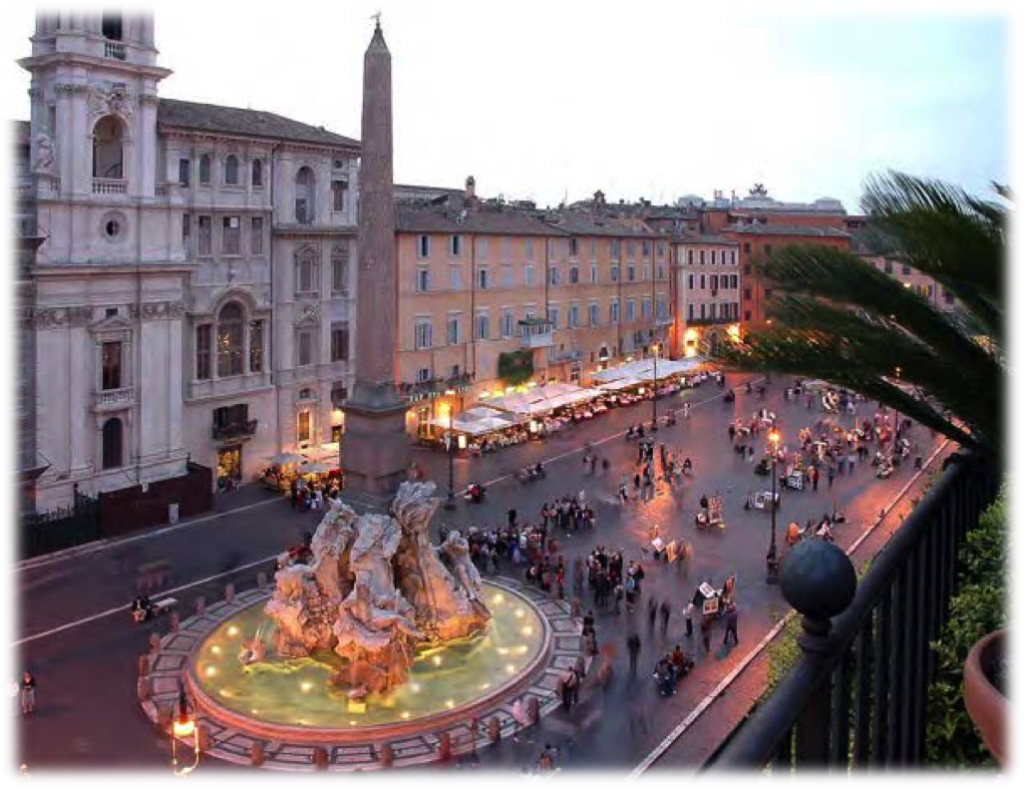
Piazza Navona

Chapel of the Our Lady of the Miracle in the Basilcia of Sant’Andrea delle Fratte
Monday, December 7 — Castel Gandolfo/Manoppello.
We will be up early to enjoy another delicious breakfast in the Hotel Michelangelo before we travel across the Italian peninsula towards the Adriatic Sea.
Our first stop will be Castel Gandolfo, which is only 30 miles Southeast of Rome. With stunning views over Lake Albano and beyond, to the coastline of the Mediterranean sea, the Papal Palace at Castel Gandolfo has been a favorite holiday residence for the popes since the 17th century. Pope Pius XI oversaw the creation of a model farm, which still produces eggs, milk, oil, vegetables and honey for local employees or for sale in the Vatican supermarket in Vatican City. Pope Pius XII, who allowed war refugees sanctuary in the villa, died there in 1958, as did Pope Paul VI two decades later. Amongst the hidden treasures that we will enjoy are the magnolia garden, the path of roses and that of aromatic herbs, the square of holly oaks and the breathtaking Belvedere garden.
After our visit to the Papal gardens, which are considered by many to be more beautiful than the V atican Gardens in Rome, we will have lunch in a famous restaurant over looking scenic Lake Albano, only steps away from the Papal Palace.
image of a man with wounds on his face, an image some believe is the actual face of Christ, formed at the moment of his Resurrection. Pope Emeritus Benedict visited this Shrine in 2006 to venerate the Holy Face of Manoppello.
We will have dinner at the same restaurant Pope Benedict dined in when he visited Manoppello — a family-owned restaurant where Nonna, Grandma, cooks with the fresh ingredients from the region. A real Italian experience!
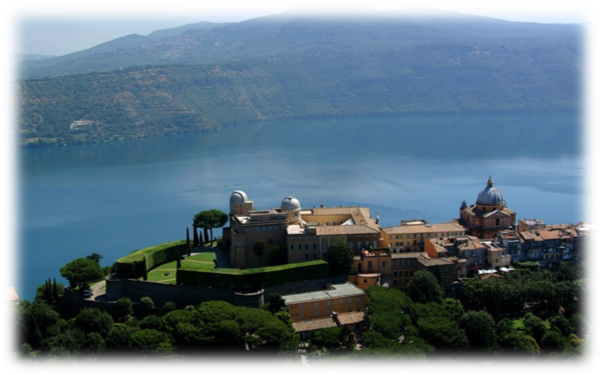
Castel Gandolfo

Shrine of the Holy Face
” From the BULL OF INDICTION of the EXTRAORDINARY JUBILEE of MERCY
… My thoughts now turn to the Mother of Mercy. May the sweetness of her countenance watch over us in this Holy Year, so that all of us may rediscover the joy of God’s tenderness. No one has penetrated the profound mystery of the Incarnation like Mary. Her entire life was patterned after the presence of mercy made flesh. The Mother of the Crucified and Risen One has entered the sanctuary of divine mercy because she participated intimately in the mystery of His love…
— Pope Francis March 13, 2015 “
Tuesday, December 8 — Rome: Feast of the Immaculate Conception.
This Feast Day of the Immaculate Conception will be extraordinary, as it will mark the beginning of the Jubilee Year of Mercy. Mass will be in St. Peter’s Basilica, with Pope Francis celebrating the Feast of the Immaculate Conception and opening the Holy Doors to St. Peter’s Basilica ( with John Paul II in 2000). After Mass, we will head to St. Peter’s Square for the Angelus led by Pope Francis. Thousands of pilgrims will be praying together in joyous celebration. As you look out into the crowds, you will experience in a very special way the universality of the One, Holy, Catholic and Apostolic Church.
Lunch will be a festive occasion as we discuss the events of the morning and the joy of the Jubilee Year.
A visit to one of our Vatican monsignor friends will follow a rest after lunch. We will hear stories about the universal Church from a very wise priest who has lived many decades in Rome at the service of the Popes. These encounters are often a highlight for our pilgrims, and fondly remembered through the years as intimate and personal moments shared. As is fitting, the monsignor will give us a meditation on Mercy.
Dinner will follow a visit to Santa Maria in Trastevere , a neighborhood just south of the Vatican. This relatively small church in the “hip” and “trendy’”neighborhood of Trastevere (“across the Tiber”) may have existed as a house-church as early as 112 AD. In ancient times, this area was the old “port” of Rome, and people from the East might well have visited here, including early Christians. By 220 AD, this site was one of the official “first 12 parishes” in Rome as confirmed by Pope Callistus I, who is buried under the main altar. Although there is a rivalry between this church and Santa Maria Maggiore (the Basilica of St. Mary Major) as to which is the first church dedicated to the Blessed Virgin, dating and tradition generally hold that this church possesses that honor. At the front of the church’s exterior, you will see stones bearing dozens of Latin and Greek inscriptions. These came partially from the ancient church itself, but also from the catacombs. They are memorial monuments — gravestones of a sort — from early Christian martyrs in the time before Christianity became tolerated.
Dinner will be in a place visited by many locals in this area, where Nonna oversees each meal!
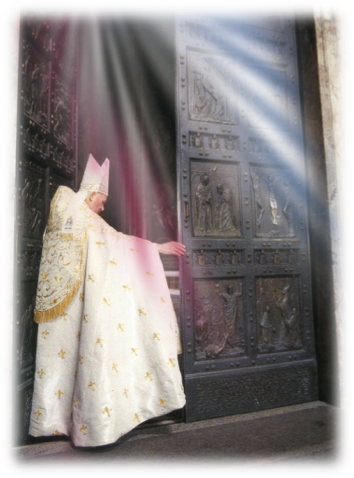
Holy Door
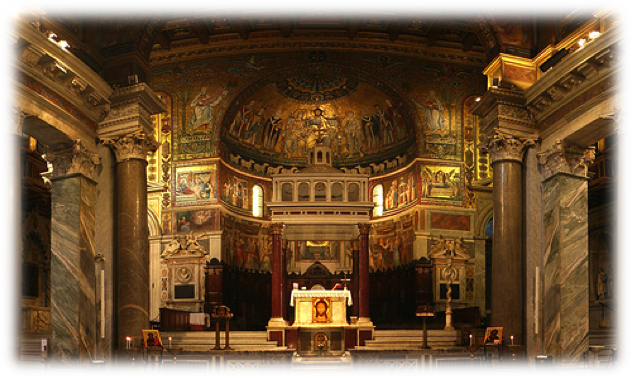
Santa Maria in Trastevere
Wednesday, December 9 — Rome.
People will be coming from afar for today’s Papal Audience at 10:30 a.m., but we will only have to walk a few blocks after breakfast to find our seats.
During the audience, Pope Francis will share a brief teaching and reading in Italian, but it will be translated into English, French, German, Spanish, Polish, Portuguese, and sometimes other languages, depending on the groups visiting.
The Pope will follow with a greeting to all gathered in St. Peter’s Piazza. At the end of the Audience, the Pope will lead us in the “Our Father” in Latin. This prayer will be printed on the back of the Papal Audience ticket. After the “Our Father,” Pope Francis will impart his Apostolic Blessing upon the crowd, which also extends to our loved ones at home. He will bless any item that you may have purchased along our journey together.
After lunch and a brief rest, we will depart for the three other patriarchal basilicas in Rome, St. Mary Major, St. John Lateran and St. Paul’s Outside-the-Walls. St. Peter’s Basilica is the 4th patriarchal basilica. Each of these churches is a glorious monument to the Faith and contains treasures of art and faith that can take one’s breath away.
In St. Mary Major, for example, there is a painting of Mary , which is believed to have been painted by St. Luke himself, making it the oldest painting of Mary in the world. It is called the Salus Populi Romani (English: the Protectress of the Roman People) — Protectress is a translation of the Latin “salus” which means “salvation” or “health.” It has historically been the most important Marian icon in Rome, and was crowned by Pope Pius XII in 1954. Pope Emeritus Benedict XVI venerated the Salus Populi Romani on different occasions, and asked Mary on each occasion to “pray for us.”
One of Pope Francis’ first acts after his election was to pray before the Salus Populi Romani. In May of 2013, the month dedicated to Our Lady and the Holy Rosary, Pope Francis also prayed his first public Rosary before this ancient and venerable image. He has also visited it many times since then.
The Roman Breviary states: “After the Council of Ephesus (431) in which the Mother of Jesus was acclaimed as Mother of God, Pope Sixtus III erected at Rome on the Esquiline Hill, a basilica dedicated to the honor of the Holy Mother of God. It was afterward called Saint Mary Major and it is the oldest church in the West dedicated to the honor of the Blessed Virgin Mary.”
The Salus Populi Romani is one of the so-called “Luke images” of which there are many throughout the world. These are believed to have been painted from the lives of Jesus and Mary by St. Luke himself. According to the account: “After the crucifixion, when Our Lady moved to the home of St. John, she took with her a few personal belongings — among which was a table built by the Redeemer Himself in the workshop of St. Joseph. When pious virgins of Jerusalem prevailed upon St. Luke to paint a portrait of the Mother of God, it was the top of this table that was used to memorialize her image.”
“While applying his brush and paints,” it continues, “St. Luke listened carefully as the Mother of Jesus spoke of the life of her Son, facts which St. Luke later recorded in his Gospel.” The account also tells us that the painting remained in and around Jerusalem until it was discovered by St. Helena in the fourth century. “Together with other sacred relics, the painting was transported to Constantinople where her son, Emperor Constantine the Great, erected a church for its enthronement.” So this icon is, in some ways, the greatest treasure in the entire city, as it is connected back through St. Luke to Mary, and to a table made by Christ Himself. In the presence of this icon, we are able to sense the presence of the Holy Family as something close and real to us.
St. John Lateran is the oldest and ranks first among the four Papal basilicas of Rome, since it is the cathedra or “seat” of the Bishop of Rome. For centuries, the Popes lived here. The façade has the inscription Christo Salvatori, “To Christ the Savior,” indicating the church’s dedication to Christ— the cathedrals of all patriarchs are dedicated to Christ Himself. As the cathedral of the Bishop of Rome, it ranks above all other churches, including St. Peter’s, and so, unlike all other Roman basilicas, it holds the title of archbasilica.
St. Paul’s Outside the Walls is dedicated to St. Paul, the Apostle to the Gentiles, who was beheaded in Rome, and contains his tomb. This very impressive church contains the images of all the Popes in little circular portraits.
Because we only have a few hours to see these historic, magnificent basilicas, we will concentrate on the meaning of each of the buildings, and the life and work of each of the saints for whom these basilicas are named.
Our farewell dinner, hosted by Dr. Robert Moynihan and Deborah Tomlinson, will be a celebratory feast, and special friends and guests of Inside the Vatican magazine will be joining us, bidding a fond farewell to those special people and places you will have come to know.
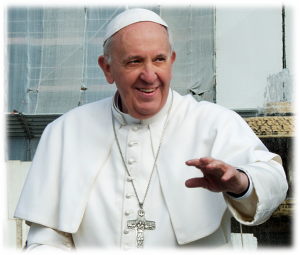
Pope Francis
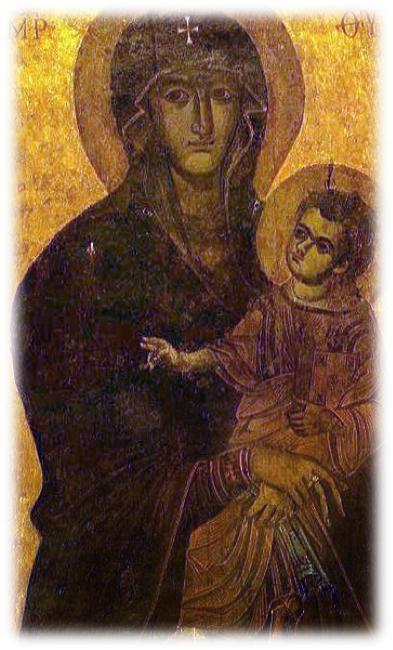
St. Mary Major
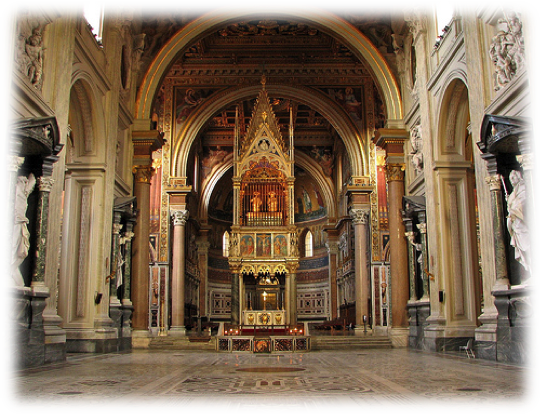
St. John Lateran
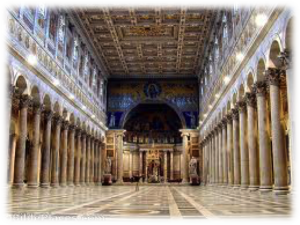
St. Paul’s Outside the Walls
Thursday, December 10 – Farewell.
After an early morning Mass, breakfast and last goodbyes, your driver will escort you back to the airport for your return home. Farewell to all our fellow pilgrims, our friends, until we meet again…
Not mentioned in this sketch of our itinerary are perhaps the two most important points…
Inside the Vatican Magazine “Year of Mercy” Pilgrimage
Add On – Norcia Retreat
December 10-14, 2015
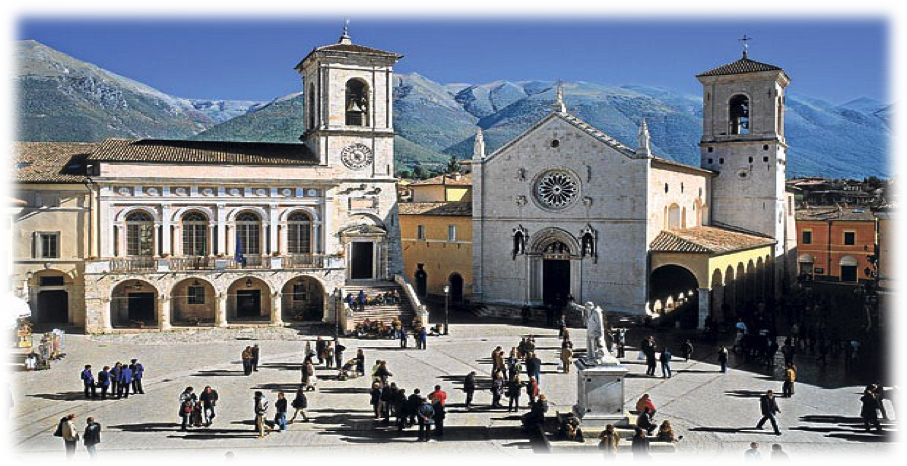
Norcia and the Benedictines
Over the centuries, “Nursia” has, in the Italian language, become “Norcia.” However, it is still the same city—the heart of Benedictine monasticism. Benedict and his twin sister, Scholastica, were born here in the late 400s, at the time of the collapse of the Roman Empire in the West. So what we have in Norcia is a “link” to that ancient world which perished with Rome’s fall, but which, through the mediation of Benedict and Benedictine monasticism, came down to us through the so-called “Dark Ages” after Rome’s fall, those centuries from 500 to 1000 A.D., where civilization and learning were restricted to the little enclaves of Benedictine monasteries.
However, for the last two centuries, there has been devastation. The monastery that had flourished for a millennium was closed under the secularizing Napoleonic legislation introduced into Italy two centuries ago, in 1810. So, for 200 years, there were no monks here.
It seemed as if the link with the past had been broken. However, all of that changed with Father Cassian Folsom, an American Benedictine, who has been a friend since 1990. Father Cassian went to Cardinal Ratzinger (now Pope Emeritus Benedict) in the 1990s, saying that he sensed a vocation to re-found the Benedictine monastery in Norcia, and Cardinal Ratzinger encouraged him to do so. And so he came to Norcia with two companions, and by themselves, with no help, they brought the ancient monastery back to life. What they were doing raised eyebrows, but, bit by bit, other young men came to join them.
Today, there are 18 monks in Norcia, and Father Cassian is gaining a worldwide reputation for his humble zeal in restoring the faith. We will have a chance to talk to him directly, and, if desired, to go to confession to him or to another one of the priests. Then we will attend the Mass celebrated by the monks in their chapel. You may also join them as they chant their prayers each morning and evening in the crypt church.
Ancient Wisdom Continues in the Sibillini Mountains
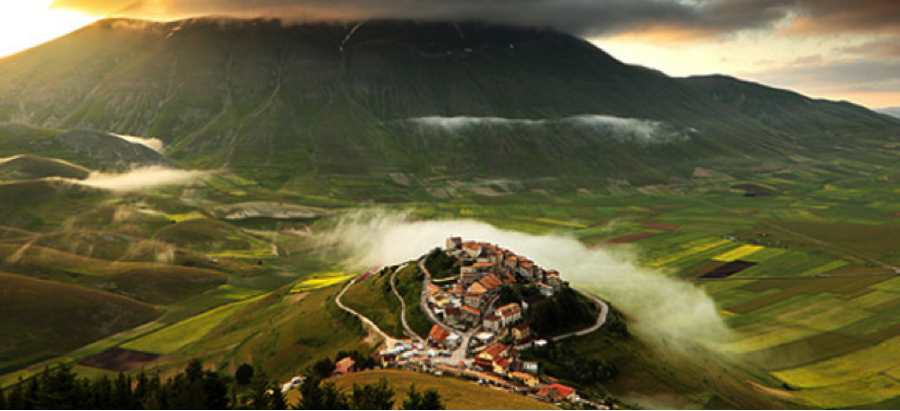
The ancient village of Castelluccio, perched atop a hill rising from a vast plain surrounded by mountain peaks inside the Sibillini Mountain National Park, is a place forgotten by time. The mists often cover the valleys, but not the village itself. We will visit Castelluccio during our retreat in Norcia.
The region around Norcia, in central Italy, is filled with rugged mountains – the Sibillini Mountains – and steep valleys. This makes it a perfect area for hiking and breathing the fresh, clean air, far from the crowded cities of Italy and the rest of Europe – the perfect place for a retreat after our days in Rome.
This area of Italy is known for its ancient wisdom. After Christian monasticism began to flourish in the desert areas of Egypt, and then of Syria — in the Christian east — during the 300s and especially during the 400s, some monks gradually began to travel westward to Italy and southern France.
In the time of St. Augustine (354-430 A.D.), in the decades just before the birth of St. Benedict in 480 A.D., the valleys around Norcia began to be populated by dozens of these monks. Many were hermits, living a solitary life. Others lived in more or less interconnected small groups, which provided an early model for what would become the communal life of St. Benedict’s monks.
Over the centuries, this eastern monastic experience was transferred to central Italy, influenced first Benedict himself, and then many others. But what is little known is that there is also a new flourishing of hermitic monastic life in the region outside of Norcia, in the valleys and on the mountain slopes of the Sibillini Mountains. No
one knows exactly how many hermits are living there; some claim hundreds. All that is known is that these hills and valleys have become, once again, a “vineyard of the Lord,” where many seek to grow closer to God through a disciplined life of prayer and reflection.
We hope to breathe in this ancient wisdom during our days in Norcia. The Palazzo Seneca (photo left) will be our home in Norcia for 3 nights, and is only 50 yards from the main piazza where the Benedictines celebrate Mass. The palace that houses Palazzo Seneca was originally built in the 16th century and was completely renovated a few years ago.

Palazzo Seneca
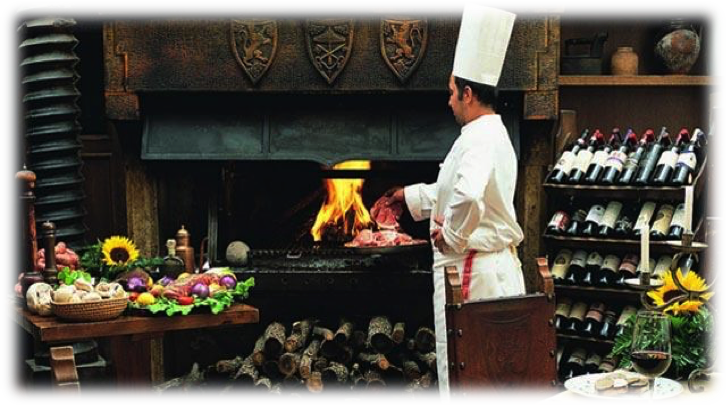
Our dinners in Norcia are enjoyed in front of this wood-burning grill.
A spa and cooking school are just two of the impressive amenities. Quiet time in the Palazzo can be spent sitting in the beautiful library, or in the garden room with a cup of afternoon tea or cappuccino. The family- owned hotel is sophisticated, simple and luxurious, which is why it was awarded the prestigious Relais & Châteaux award — an exclusive honor recognizing the finest hotels and gourmet restaurants in 55 countries around the world.
” We will make every effort to adhere to the printed program and itinerary. On rare occasions, it may be necessary to adjust arrangements due to unforeseen circumstances beyond our control (including such circumstances as the weather, airline schedule change, hotel requisitions, political disturbances, or transportation mechanical problems). Should such adjustment be necessary, substitution will be made to the best of our abilities.”
To view the complete registration packet with special letters from Dr. Robert Moynihan and Deborah Tomlinson click here.
To register for this pilgrimage, click here for the registration documents only. Please mail completed forms and deposit to:
Inside the Vatican
14 West Main St.
Front Royal, VA 22630For more information or to reserve your spot, contact Inside the Vatican Pilgrimages:[email protected] or 202.536.4555.

